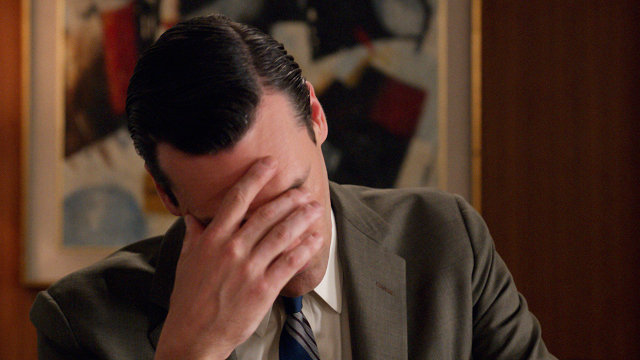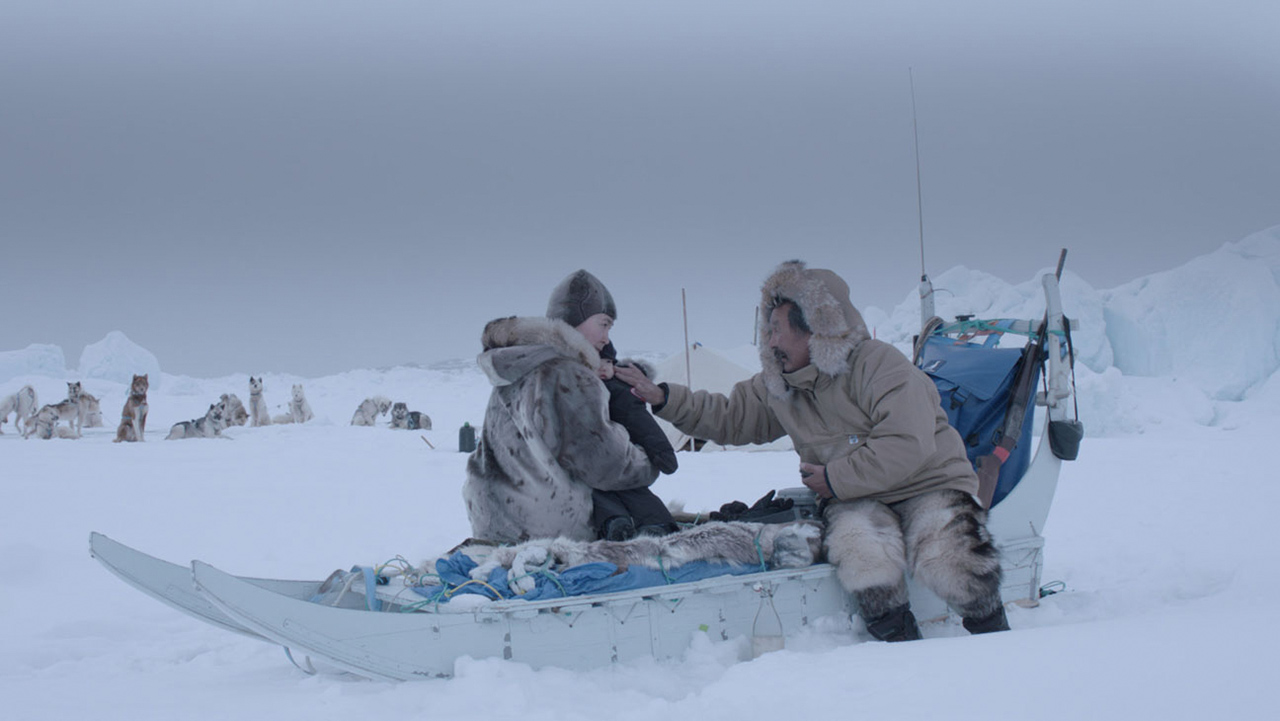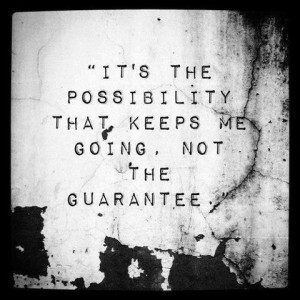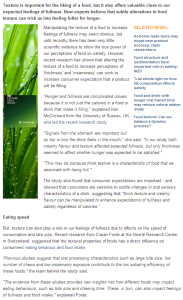THE SCIENCE OF STORYTELLING: HOW NARRATIVE CUTS THROUGH DISTRACTION LIKE NOTHING ELSE (1 of 3)
In the first of a three-part series, author Jonathan Gottschall discusses the science of storytelling–not just escapism, stories have real power to hold human attention and shape our thinking.
Humans live in a storm of stories. We live in stories all day long, and dream in stories all night long. We communicate through stories and learn from them. We collapse gratefully into stories after a long day at work. Without personal life stories to organize our experience, our own lives would lack coherence and meaning. Homo sapiens (wise man) is a pretty good definition for our species. But Homo fictus (fiction man) would be about as accurate. Man is the storytelling animal.
When it comes to marketing, a company like Coca-Cola gets this. They know that, deep down, they are much more a story factory than a beverage factory. No matter what they’d like us to believe, Coke’s success isn’t due to some magic in their fizzy syrup water (at least not since they took the actual cocaine out). Coke excels because they’ve been clobbering the opposition in the story wars for more than a century. People want to see themselves in the stories Coke tells. Coke understands that their customer is a member of the species Homo fictus, and that they will succeed or fail based largely on the power of their storytelling.

As Scott Donaton argued in a recent Co.Create post, other brands should learn this lesson as well as Coke has. “The challenge is clear by now,” Donaton writes, “Intrusive, interruptive, self-centered marketing no longer works the way it once did, and its effectiveness will only continue to diminish in the social age. The question is what will replace the legacy model. There’s a one-word answer: stories.” Story is the answer for two reasons, both of them backed by compelling science. First, because people are naturally greedy for stories, they have a unique ability to seize and rivet our attention. Second, stories aren’t just fun escapism–they have an almost spooky ability to mold our thinking and behavior. In this post, I’ll describe the science behind the attention-seizing power of stories, leaving their molding power for a follow-up post.
Brands play in an intensely competitive attention economy. The problem isn’t just that attention is a woefully scarce resource relative to demand, it’s that it’s also shattered and scattered around. We can’t blame our smart phones or other modern technologies for our short attention spans. The human mind is a wanderer by nature. The daydream is the mind’s default state. Whenever the mind doesn’t have something really important to do, it gets bored and wanders off into la-la land. Studies show that we spend about half of our waking hours–1/3 of our lives on earth–spinning fantasies. We have about two-thousand of these a day (!), with an average duration of fourteen seconds. In other words, our minds are simply flitting all over the place all the time.
So this is the most fundamental challenge we face in the attention economy: how do we pin down the wandering mind? How do we override the natural tendency for a mind to skip away from whatever we are showing it? By telling stories. In normal life, we spin about one-hundred daydreams per waking hour. But when absorbed in a good story–when we watch a show like Breaking Bad or read a novel like The Hunger Games–we experience approximately zero daydreams per hour. Our hyper minds go still and they pay close attention, often for hours on end. This is really very impressive. What it means is that story acts like a drug that reliably lulls us into an altered state of consciousness.

To illustrate why, let’s run a thought experiment. Imagine you are living in Paris in 1896, and you’ve been invited to see something that you’ve heard about but never seen. You walk out of the bright hot streets into a cool, dark theater, and there’s a white screen that opens up in a dazzling explosion of light–like a window thrown open on an alternative universe. You are watching one of the first films screenings in the world. And what you see through the magic window is terrifying. The film is by the Lumiere brothers and it is called The Arrival of a Train. Go ahead, watch it now–but brace yourself! Arguably, this is history’s first horror film.
Don’t bother watching the whole thing. Nothing happens. A train arrives at a station and people mill around. Were you terrified? Well, according to film lore, the first audience for this film was so terrified that they shot out of their seats and stampeded for the exit. They did not want to get run over by that train. Film historians believe this story of chaos in a Parisian theater is probably exaggerated. But whether true or not, the story communicates the same idea. The first movie audiences were totally unsophisticated about the illusion of film. But after more than a century of experience, we moderns are highly sophisticated about film. Movie trains don’t scare us anymore.
But not so fast. Consider this trailer for the horror film Paranormal Activity 3.What’s happening here? These people aren’t idiots. This isn’t their first film. They know the blood isn’t real. They know there are no ghosts or monsters in the theater. They know everything they are seeing is just light flickering on a two-dimensional background. So why are they treating fake things as real? Neuroscience of brains on fiction gives us a clue. If you slide a person into an FMRI machine that watches the brain while the brain watches a story, you’ll find something interesting–the brain doesn’t look like a spectator, it looks more like a participant in the action. When Clint Eastwood is angry on screen, the viewers’ brains look angry too; when the scene is sad, the viewers’ brains also look sad.

“We” know the story is fake, but that doesn’t stop the unconscious parts of the brain from processing it like real. That’s why the audience for a horror film cringes in their chairs, screams for help, and balls up to protect their vital organs. That’s why our hearts race when the hero of a story is cornered–why we weep over the fate of a pretend pet like Old Yeller. Stories powerfully hook and hold human attention because, at a brain level, whatever is happening in a story is happening to us and not just them.
But this all leads to a bigger question. Most of us think of stories as a way to pleasantly while away our leisure time. Is there any evidence that story is actually effective in influencing us–in modifying our thinking and behavior? Yes. Lots. That’s the subject of my next post.
==============================
http://www.fastcocreate.com/3020046/infecting-an-audience-why-great-stories-spread
INFECTING AN AUDIENCE: WHY GREAT STORIES SPREAD (2 of 3)
In the second of a two-part series, Jonathan Gottschall discusses the unique power stories have to change minds, and the key to their effectiveness.
In his 1897 book What is Art? the great Russian novelist Leo Tolstoy defined art as “an infection.” Good art, Tolstoy wrote, infects the audience with the storyteller’s emotion and ideas. The better the art, the stronger the infection–the more stealthily it works around whatever immunities we possess and plants the virus. Tolstoy reached this conclusion through artistic intuition, not science, but more than a century after Tolstoy’s death this is exactly what psychologists are finding in the lab. When we enter into a story, we enter into an altered mental state–a state of high suggestibility.
Note that this goes against our culture’s dominant idea about stories. When I ask my students why people like stories, most cite escapism. Life is hard. Storyland is easy. Stories give us a short vacation from the troubles of our real lives. We enter the pretend worlds of stories and have a nice time, and then walk away unscathed and unchanged. But if we think this we are wrong. Studies show that our fears, hopes, and values are strongly influenced by our stories.

For instance, if psychologists get a bunch of people in the lab and just tell them all the reasons it is wrong to discriminate against homosexuals, they don’t make much progress. People who feel differently dig in their heels. They get critical and skeptical. They don’t walk out of the lab with more tolerant views. But if they watch a TV show like Will and Grace, which treats homosexuality in non-judgmental ways, their own views are likely to move in the same non-judgmental direction. And if a lot of us start empathizing with gay characters on shows like Ellen, Modern Family, Six Feet Under, andGlee, you can get a driver of massive social change. American attitudes toward homosexuality have liberalized with dizzying speed over the last 15 years or so, and social scientists give TV some of the credit.
So stories have a unique ability to infect minds with ideas and attitudes that spread contagiously. The next question is obvious: How do we get a piece of that power? It isn’t easy because the story has to be good or it doesn’t work. Here’s what I mean by “good”: psychological studies show that we don’t get infected by a story unless we are emotionally transported–unless we lose ourselves in the story.
And how do we make an audience lose themselves? This is a hard task that countless books and courses on film and creative writing try to answer. But we can make a good start by learning to use story’s basic master formula. Stories–from great epic poems to office scuttlebutt–are almost uniformly about humans facing problems and trying to overcome them. Stories have a problem-solution structure. Stories are always about trouble. Stories aren’t often about people having good days. They are usually about people having bad days–the very worst days of their lives–and struggling to get through.

But stories are not usually about meaningless problem solving. Unless a story is communicating some message or moral, some set of values or ideas, it seems empty. Moby Dick wouldn’t be a great story if it were just about a deranged whale smashing boats and chomping sailors. Moby Dickis a great novel because all that action communicates a deeper message about good and evil.
In a business setting, this makes story a natural vehicle for conveying our ideas, our values, our vision. At bottom, that’s what all the action in a story is for: a story is a delivery vehicle for the teller’s message. Story is the thing that sneaks the infection past our immunities, past our resistance. And the story then turns us into hosts who spread the infection through our social networks and help create epidemics.
The neuroeconomist Paul Zak studies how this works at a brain level. He paid research subjects $20 and then had them read a sad and compelling story about a father and his terminally ill son, taking blood samples before and after. At the end of the study, subjects were given the chance to donate money to a charity serving sick kids. After the story, the blood samples showed spikes of oxcytocin in the blood. Oxytocin has been called the empathy chemical. And the more oxcytocin there was in the blood, the more these cash-strapped, empathy-drunk, students donated to charity (on average they donated half of their pay). The study suggests that stories change our behaviors by actually changing our brain chemistry.

But Zak stresses, as I do, that the information about the sick child has to be presented in a classic story structure. Lacking that structure, you don’t get emotional transportation, you don’t get chemical changes in the brain, and you don’t get the behavior change–which in this case consists, take note, of people deciding to cough up money.
For an example of a brand that understands story structure, look at this commercial for Jack Links beef jerky. Jack Links expertly compresses a classic story arc into a sleek 30-second spot. We have our protagonist–an innocent sasquatch who is so gentle and hopeless that he can’t even catch a bunny for his supper. And we have our cocky, beer-guzzling antagonists who torment our sasquatch for no reason at all. And then we have the poetic justice that people thirst for in stories: the hero gives the villains what they deserve.
Notice that these ads say nothing about the qualities of the product. No smiling pitchman strolls out to say, “Try our beef jerky–it’s wholesome and delicious!” Jack Link’s strategy was simply to tell the coolest and funniest stories it could, with the jerky appearing in the stories only as product placement–in exactly the same way that a Coke can might show up in an episode of CSI. This attempt to create a positive emotional connection with consumers worked big time. People liked the commercials so much that they went out of their way to watch them millions of times on YouTube and to spread them around through their social networks. As a result of the “Messin with Sasquatch” campaign, Jack Link’s is now a brand that most of us know and think about positively.
This all raises another question. Should marketers feel bad about using stories as a tool to shape values and earn a buck? Sure. But maybe not too much. After all, guys like Melville and Tolstoy and Shakespeare were playing the same game. They hoped to infect us with particular ideas about life, while earning as much money and fame as possible. This article isn’t a set of instructions for turning story into a prostitute. It’s an explanation for why story has always been a prostitute.
But let’s back up for a moment. Is storytelling really locked into a master formula? Hasn’t the digital revolution paved the way for a new kind of storytelling? That’s the subject of my next post. Is it time for story 2.0?
==========================================
http://www.fastcocreate.com/3020047/story-20-the-surprising-thing-about-the-next-wave-of-narrative
STORY 2.0: THE SURPRISING THING ABOUT THE NEXT WAVE OF NARRATIVE
Wrapping up a three-part series, Jonathan Gottschall discusses the problem with interactivity and some eternal truths of storytelling.
Imagine the novelist James Joyce peering through his window into the Parisian night. He’s chain-smoking. He’s taking a bit of medicinal cocaine for his ailments. He’s adjusting his thick glasses and squinting down at his big notebook pages, scratching out Finnegan’s Wake in blue crayon. He’s laughing so hard at his own jokes–his rollicking wordplay, his lewd asides–that his long-suffering wife, Nora, shouts at him from bed to knock it off so she can get some sleep.
Finnegan’s Wake was an act of breathtaking literary swagger. Like Jackson Pollack slinging paint at canvas, Joyce wanted to smash up the traditional grammar of his art form. Frustrated with the limitations of English, he invented his own language, mashing together words and word bits from dozens of tongues into a new dialect. Bored with the contrivances of “cutanddry plot,” Joyce did away with plot almost entirely. And while he was at it, he pretty much demolished the whole notion of character, too. Joyce’s characters shift and morph, changing names, personality attributes, and physical traits. James Joyce set out to take something as old as humanity–the storytelling impulse–and make it new.

Joyce–mostly blind, toothless, obsessed with his money and his fame–worked heroically at Finnegan’s Wake for 17 years, producing 700 pages that would, he bragged, keep literary critics busy for 300 years. In this, he probably succeeded. The book is now hailed as a towering monument of experimental art, and as one of the greatest novels ever written. According to Yale critic Harold Bloom, Finnegan’s Wake is the one work of modern literature whose genius stands comparison to Dante and Shakespeare.
When I give talks about the science of storytelling to business audiences, I always get the same question: “What’s the next big thing in story? What new thing will come along and transform everything”? My audiences seem to worry–as Joyce did–that the old story forms have gone a little stale, and the time is ripe for a bit of creative destruction. The digital revolution has put a massive number of new and powerful tools at the storyteller’s disposal. And if technology has revolutionized our tools, shouldn’t this lead to a revolution in the stories themselves? This whole way of thinking is summed up in an annual summit called The Future of Storytelling, which bills itself as “Reinventing the way stories are told.” Is it time for story 2.0?

Interactivity seems to be the holy grail. The idea of a creative class feeding stories to passive consumers is so 1995. Everything in the digital universe is two-way, interactive, and collaborative. Digital-age consumers will want to interact with their stories–control them, talk back to them. They don’t want stories washing over them like waves, they want to jump on the waves and surf. All storytelling doesn’t necessarily have to go as far as video games–where you get to actually be the character in the movie and make choices that determine how it ends. But that’s the idea.
Before we get too swept up in our enthusiasm to reinvent storytelling, let’s return to James Joyce. There’s a paradox about Finnegan’s Wake. It is known as one of the greatest novels a human has ever penned, and also as a novel that humans simply cannot stand to read. I’m a literature professor, and I’ve never met a single colleague who has managed to read the whole thing, or has even wanted to. Finnegan’s Wake is admired for its sheer balls and its astonishing, half-loony creativity, but it’s almost entirely unread and unloved.

Master storytellers are wizards who lull us into a trance. When entranced by story, we lose track of our immediate surroundings as our minds teleport us into an alternative story universe (psychologists call this phenomenon narrative transportation). Finnegan’s failure to connect with readers isn’t due only to the novel’s fantastically obscure language (one critic refers to the novel as an act of “linguistic sodomy”). It’s because the novel–with its incomprehensible plot and shape-shifting characters–doesn’t cast an entrancing spell. Joyce denies us what we most want in a story: that sensation of falling through the pages of a book and losing track of ourselves in a land of make-believe.
Here’s the problem with interactivity: There’s no evidence people actually want it in their stories. No one watches Mad Men or reads Gone Girl yearning for control of the story as it unfolds. Interaction is precisely what most of us don’t want during story time. The more we interact with a story, the more we have to maintain the alertness of the mind operating in the real world. We can’t achieve the dreamy trance that constitutes so much of the joy of story–and the power. And the more I think about it, the more convinced I am that Finnegan’s Wake, for all its splendor as a kind of impressionistic word painting, repels readers because of its interactivity. Most critics think that Joyce was trying to get away from what he called “wideawake language” to re-create the chaos of dreaming life. Paradoxically, however, the sheer difficulty of Finnegan’s Wake forces readers to maintain a “wideawake” frame of mind as they attempt to puzzle their way through. They can’t slip into the waking dream of story time.

Story resists reinvention. As the example of Finnegan’s Wake shows, storytelling is not something that can be endlessly rejiggered and reengineered. Story is like a circle. A circle is a circle. The minute you start fussing with the line you create a non-circle. Similarly, story only works inside narrow bounds of possibility. Imagine narrative transportation as this powerful brain capacity that is protected by a lock. The lock can only be opened with a specific combination. For as long as there have been humans, the ways of undoing the lock have been passed down through generations of storytellers. Going back to the earliest forms of oral folktales and moving forward through stage plays, to printed novels, and modern YouTube shorts, the fundamentals of successful storytelling have not changed at all. Over the last 15 years, perhaps the most spectacularly successful “new” thing in story has been very old. I’m speaking here of the rise of great cable dramas like The Sopranos, The Wire, and Breaking Bad. But there’s nothing new about these shows. They are just very good novels transferred to the screen. (The much ballyhooed anti-hero trend may be new to TV drama, but it’s nothing new to literature.) When it comes to the fundamentals of story, there is not now–and never will be–anything new under the sun.

To see what I’m getting at, take a good look at this famous photograph of the storytelling animal in action. This photograph captures Kung San bushmen sharing a story in 1947. The storyteller is at the center, holding his arms up like a wizard throwing spells. He’s drawn his audience together skin against skin, mind against mind. He’s dictating the images in their minds, the feelings in their hearts. He’s wielding huge power. And he’s doing so only with the most natural human tools: his expressive face and hands, his voice, his story. And things aren’t much different today. There’s an ancient grammar to story that opens our mental locks, and gives us the joy of story. A tablet computer is a bit like the clay tablet from 3000 BC or the printing press from 1450–a technology that is radically changing how we consume stories, without changing the fundamental elements of the stories themselves.
James Joyce certainly knew how to tell stories in the classic way (see his immortal short-story collection Dubliners). As he wrote to a friend aboutFinnegan’s Wake, “I might easily have written this story in the traditional manner. . . . Every novelist knows the recipe. . . . But I, after all, am trying to tell the story . . . in a new way.” Joyce was genuinely surprised that so few people–a portion of highly sophisticated critics aside–could connect with his new way of telling a story. He really had, as H. G. Wells complained to him in a letter, “turned his back on the common man.”
In business storytelling, connecting with the “common man” is the whole point. And, as I’ve argued in these posts, successful connection means hewing to the principles of good storytelling that are coded in the DNA of our species and won’t change until human nature does.
Jonathan Gottschall is the author of The Storytelling Animal: How Stories Make Us Human, published by Houghton Mifflin Harcourt. His work has been featured in the New York Times Magazine, Scientific American, and the Chronicle of Higher Education, among others.
Read the two previous posts in this series:
“The Science Of Storytelling: How Narrative Cuts Through Distraction Like Nothing Else”
“Infecting An Audience: Why Great Stories Spread.”





